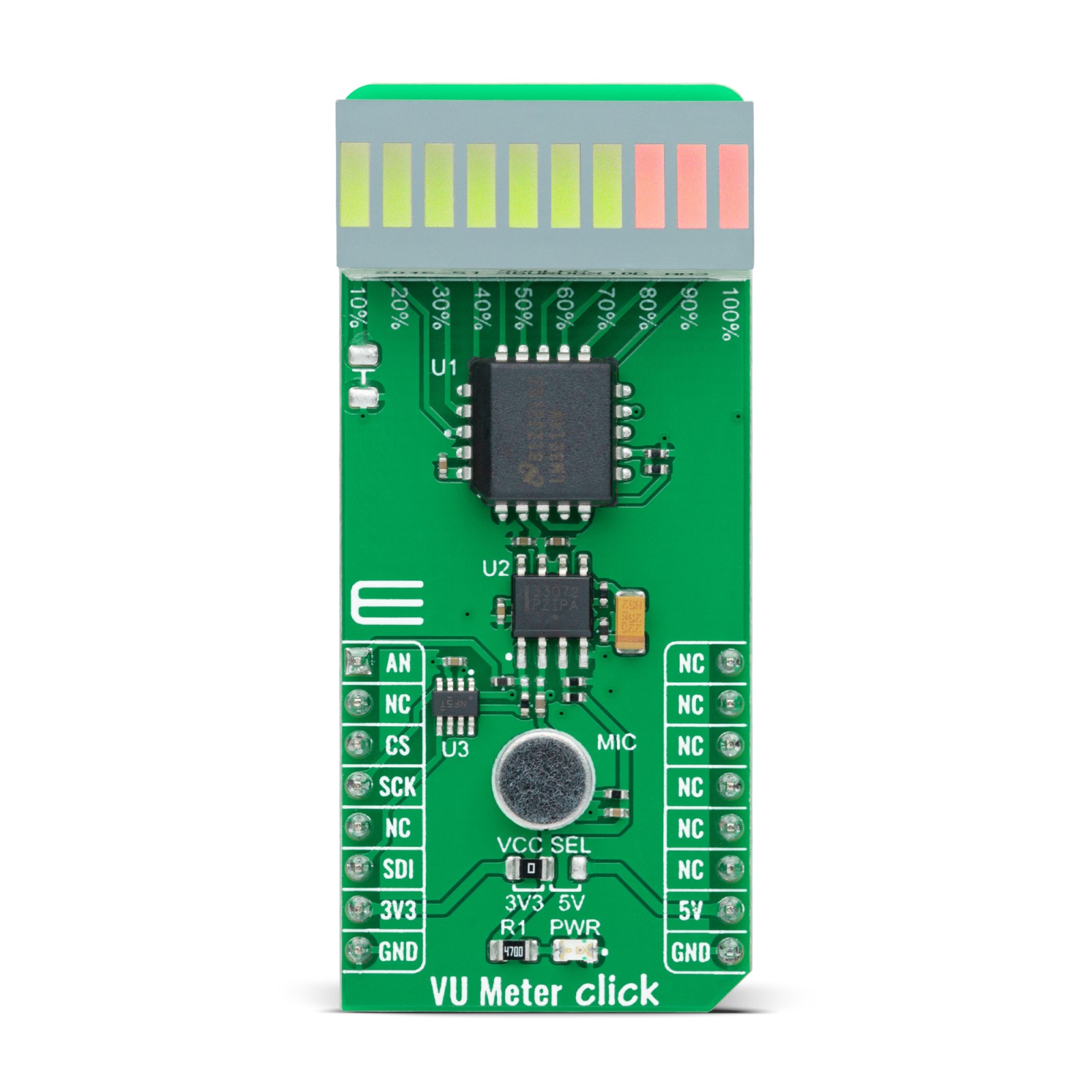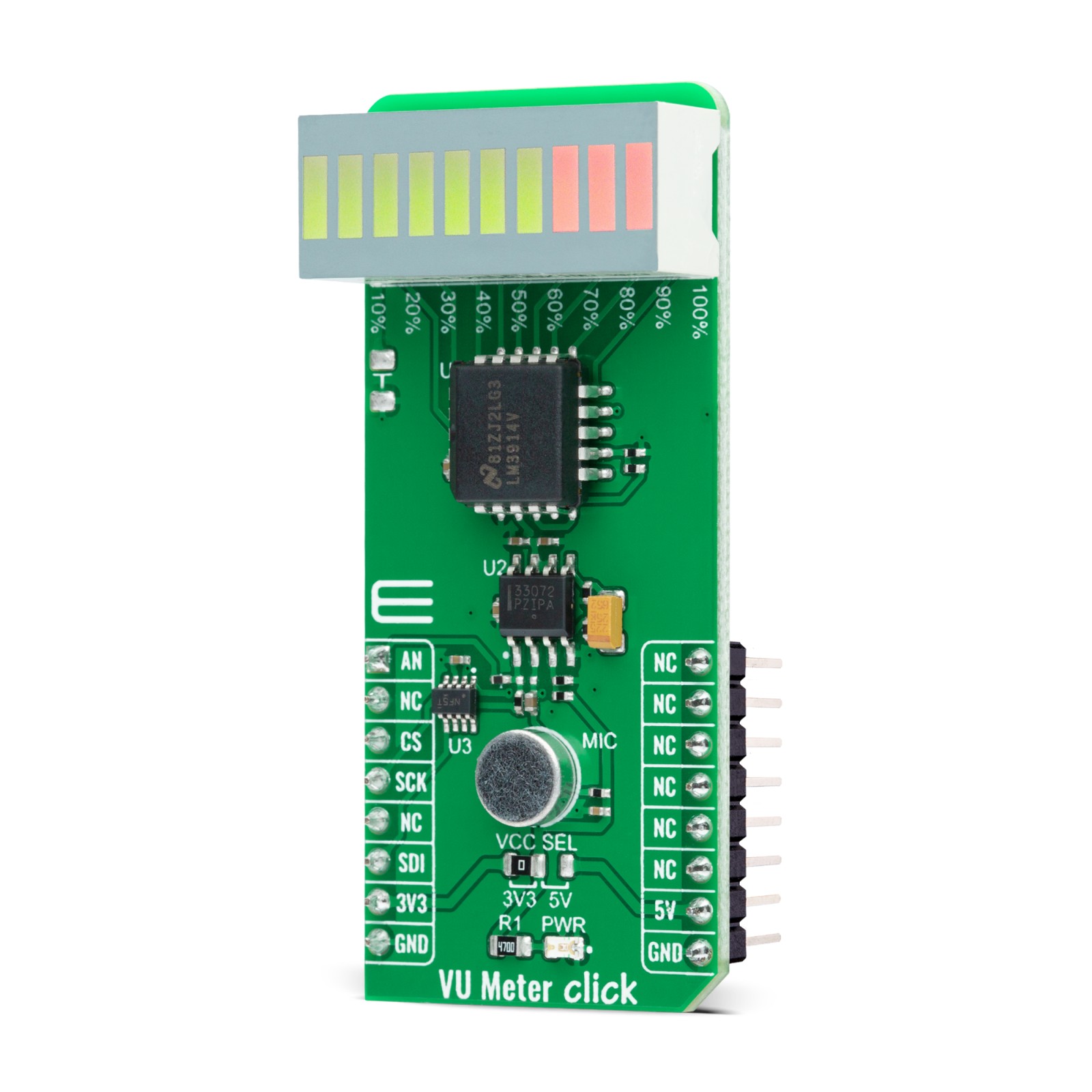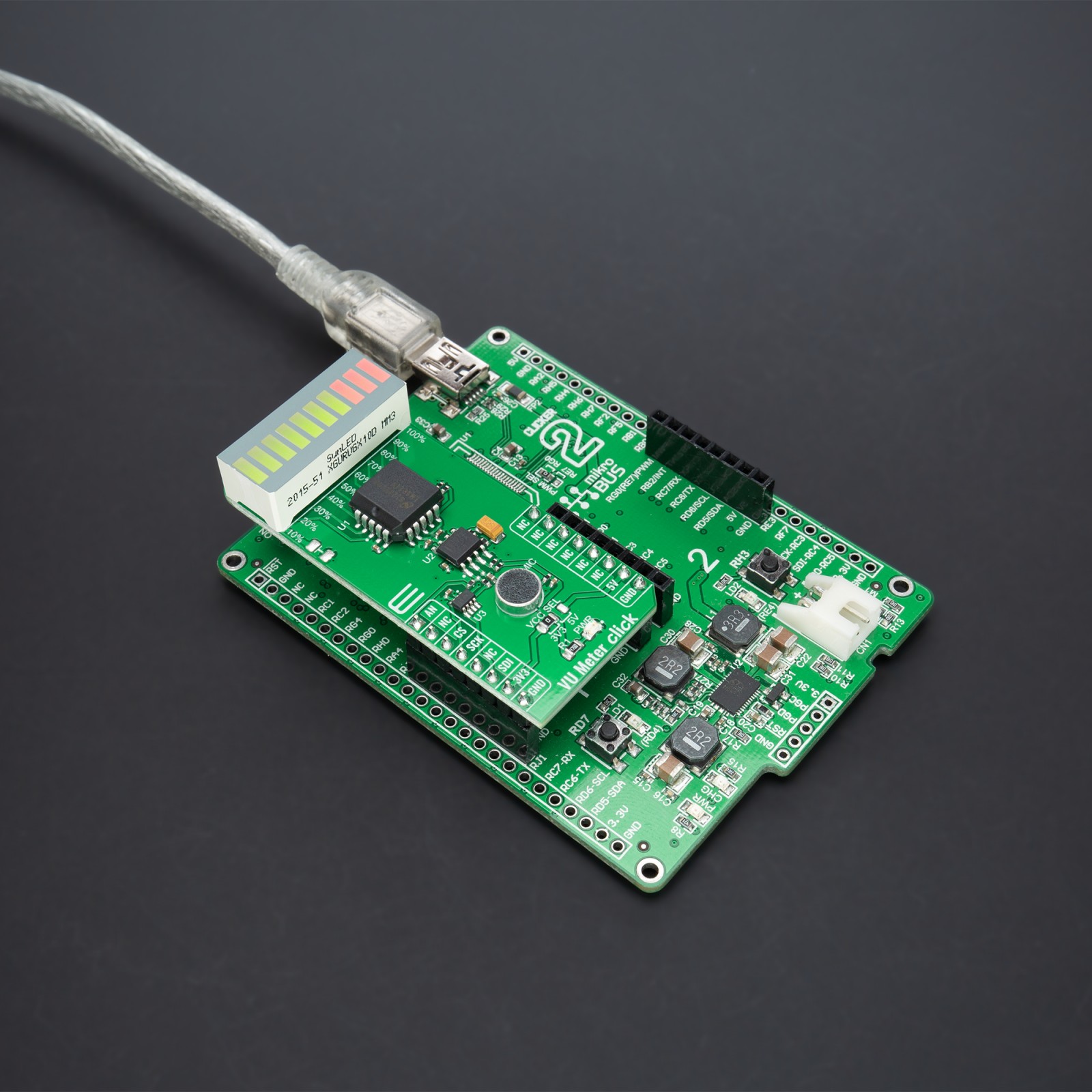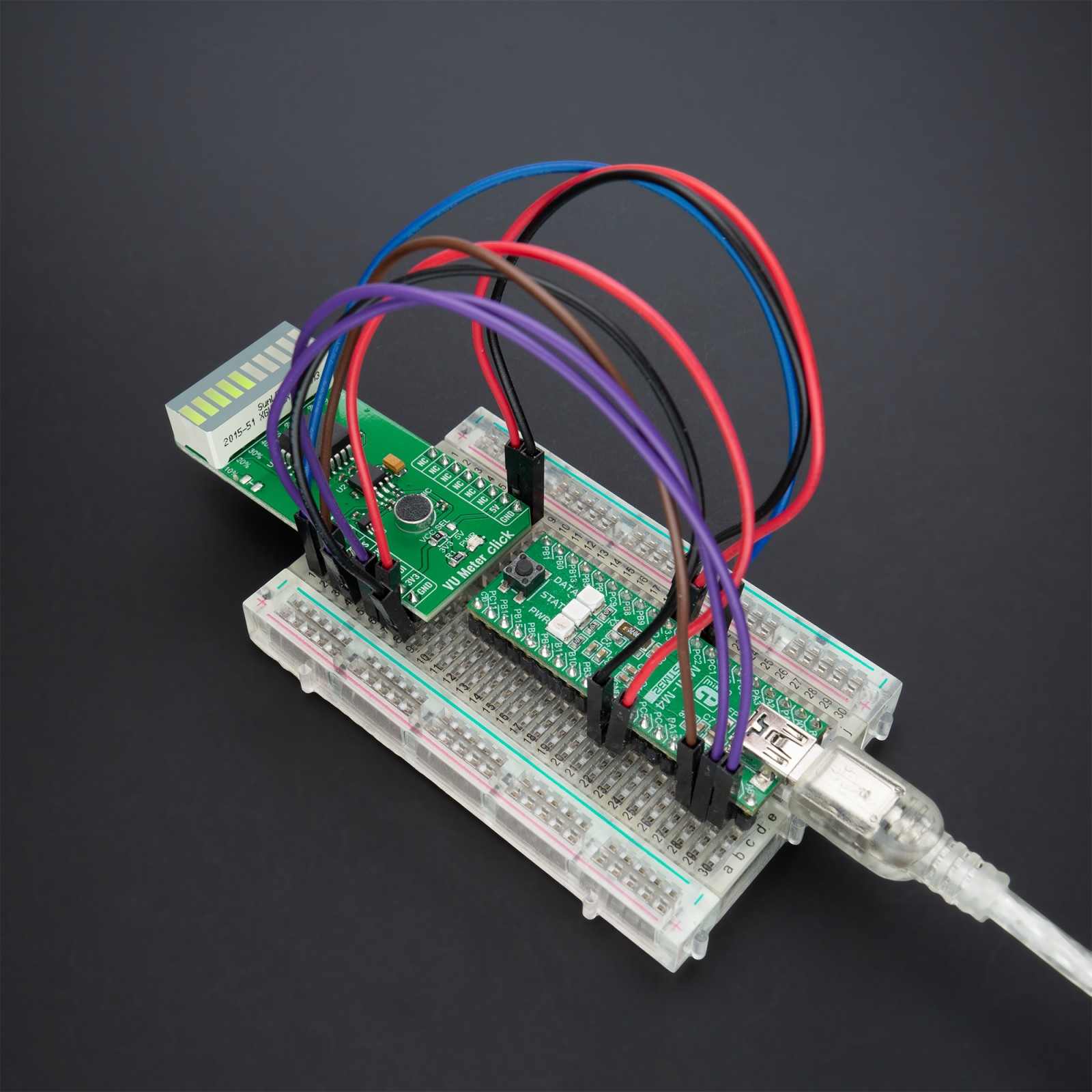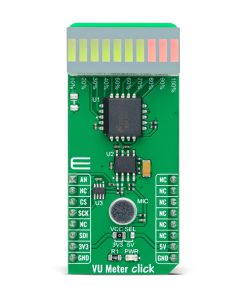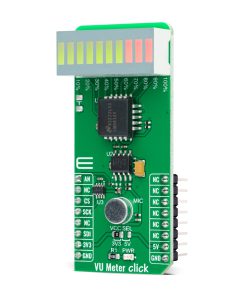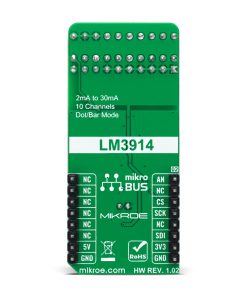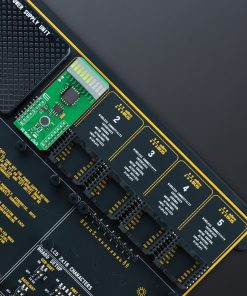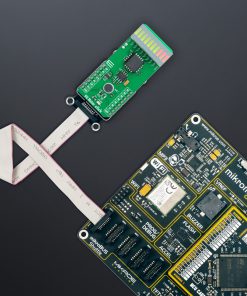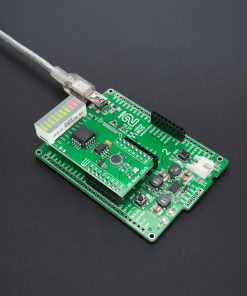VU Meter Click is a compact add-on board representing a volume unit meter that displays the intensity of an audio signal. This board features the LM3914, a monolithic integrated circuit that senses analog voltage levels and drives a 10-segment bar graph display from Texas Instruments. This Click board™ is manufactured with a sound detecting device (microphone), Op-Amp, and the LM3914, which gleams the bar graph display according to the sound’s quality. The LM3914 is an analog-controlled driver meaning it can control (turn ON or OFF) a display by an analog input voltage and eliminates the need for additional programming. This Click board™ is commonly used in visual alarms and other metering or monitoring applications.
VU Meter Click is supported by a mikroSDK compliant library, which includes functions that simplify software development. This Click board™ comes as a fully tested product, ready to be used on a system equipped with the mikroBUS™ socket.
 RTC Click
2 × R390.00
RTC Click
2 × R390.00  Alcohol Click
1 × R335.00
Alcohol Click
1 × R335.00  GSM Click
1 × R1,050.00
GSM Click
1 × R1,050.00  ccRF2 Click
1 × R800.00
ccRF2 Click
1 × R800.00 
